Write your brilliant content
Blog
-
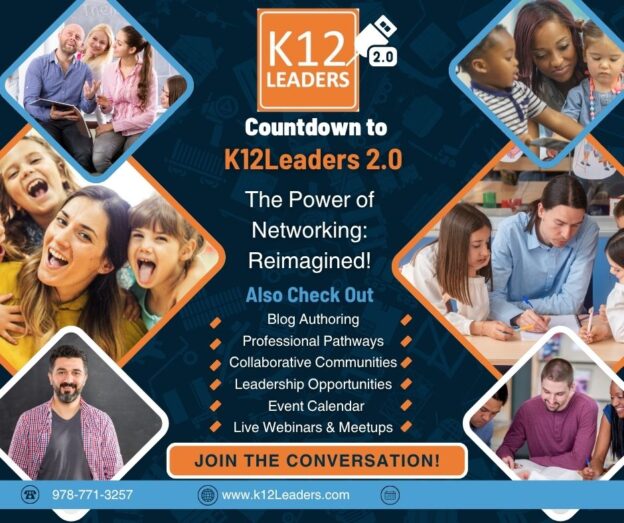
The Power of Networking Reimagined: Purpose Over Popularity
The Power of Networking Reimagined: Purpose Over Popularity
In education, relationships matter. But too often, “networking” has come to mean collecting followers, chasing clout, or participating in transactional exchanges that never quite lead to growth. For educators, people whose days are built around authenticity, collaboration, and shared mission..that old definition just doesn’t fit.
K12Leaders 2.0 offers something different: a place where networking isn’t about popularity, it’s about purpose.
Beyond the Algorithm, Toward Alignment
Unlike platforms that reward visibility over value, K12Leaders 2.0 is intentionally designed to bring educators together based on what actually matters: shared goals, complementary expertise, and a desire to grow both individually and collectively. Whether you’re a first-year teacher figuring out classroom management or a seasoned administrator re-imagining district strategy, this is a space where you’ll find people aligned with your vision, not just your title.
Here, your contributions aren’t ranked by likes. They’re recognized by impact.
Every Voice, Every Role, Every Stage
One of the most powerful aspects of re-imagining networking is recognizing that wisdom comes from every corner of the schoolhouse. K12Leaders 2.0 isn’t exclusive to administrators or veteran educators; it’s built for the instructional coach, the guidance counselor, the para-educator, the family engagement lead.
In this space, new voices are just as valued as long-standing ones. The mentor and mentee feed each other. A brilliant idea from a tiny district can spark change in a large one. Because when you connect people not based on hierarchy, but on humanity , real transformation begins.
Wisdom comes from every corner of the schoolhouse.Collaboration That Moves the Needle
This isn’t networking that ends with “let’s connect.” It’s networking that leads to “let’s build .” On K12Leaders 2.0, educators don’t just follow each other, they create together. Co-author a resource. Swap classroom strategies. Crowdsource advice in real time. It’s a dynamic space, fueled by professionals who are in the work, ready to move from dialogue to action.
And the best part? It’s all grounded in a shared purpose: making education better, stronger, and more inclusive… for everyone!
Networking shouldn’t feel performative. It should feel powerful. It should be the spark that ignites your next project, the connection that makes you feel seen, the message that reminds you why you started.
That’s the power of networking— re-imagined. That’s what you’ll find in K12Leaders 2.0.
Ready to join the movement?
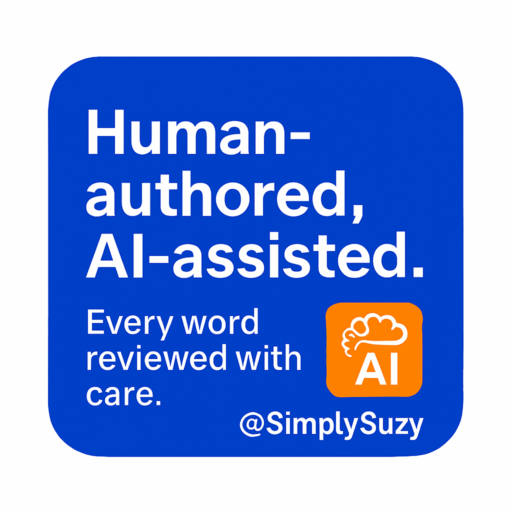
-
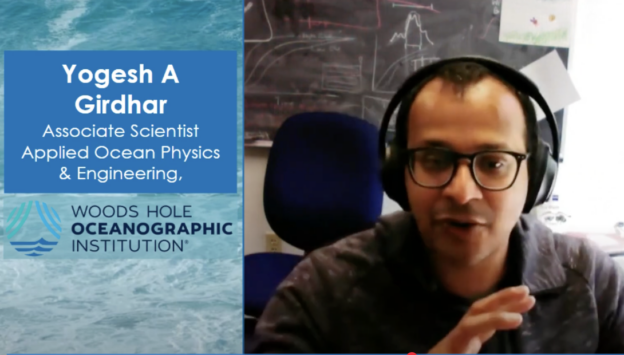
Exploring the Ocean’s Final Frontier: How Kids Are Building Robots for the Twilight Zone
Real-World Science in Action—And in the Classroom
“We know more about the surface of Mars than we do about the depths of our own oceans.” Oceanographers repeat this often, and for good reason. The Ocean Twilight Zone (OTZ)—a vast, dimly lit layer between 200 and 1000 meters deep—remains one of the least understood parts of our planet. It plays a key role in marine life, climate regulation, and carbon storage. But studying a place so remote and inhospitable is no small challenge.
That’s where robotics comes in. Thanks to Scoutlier’s OTZ Project-Based Learning Program, students aren’t just learning about ocean exploration—they’re building the tools to do it themselves, engaging in hands-on, inquiry-driven experiences that mirror the real-world challenges scientists face.
Yogesh Girdhar, a scientist at Woods Hole Oceanographic Institution, puts it simply: “If you’re succeeding all the time, that means you’re not really doing anything interesting.” His work with robotics and AI is focused on making exploration in the Twilight Zone not just possible, but more effective. That same philosophy—pushing boundaries and embracing discovery—is now being passed down to the next generation through project-based learning.
“The OTZ is home to species that migrate vertically every night in the largest movement of biomass on Earth,” says Girdhar. “It also serves as a major carbon sink, pulling carbon from the atmosphere and trapping it in the deep sea. But because it’s so difficult to access, scientists rely on technology—especially autonomous robotics—to gather data and uncover its secrets.”
Traditional deep-sea exploration depends on expensive, remotely operated vehicles. But autonomous robots with AI-driven decision-making allow for new kinds of discovery. Instead of following a rigid script, they react to their surroundings, adjusting their movements and objectives based on what they encounter. They are, in a sense, learning about the ocean as they explore it.
Scoutlier’s Ocean Twilight Zone Project-Based Learning Program brings this technology to students. Through hands-on projects, young explorers:
- Design and build their own underwater robots.
- Program adaptive AI that allows their robots to explore and respond to new data.
- Analyze real-world findings just like marine scientists.
- Collaborate on STEM challenges that mirror the work of professional oceanographers.
This isn’t a classroom experiment—it’s a model of project-based learning that prepares students to engage with real-world scientific inquiry. The OTZ program is an excellent fit for K-12 schools looking to integrate STEM into their curriculum, whether as part of a science class, an enrichment program, or a summer camp. It equips students with practical problem-solving skills and leadership opportunities, helping them develop confidence in tackling complex challenges.
By combining robotics, AI, and ocean science, Scoutlier’s program helps students move beyond textbooks and into active exploration. They don’t just study oceanography; they contribute to it. The discoveries of tomorrow might come from students experimenting today.
The Ocean Twilight Zone remains one of Earth’s last frontiers. With the right tools and the right minds, we can bring its mysteries to light. Whether you’re an educator, a student, or just someone fascinated by the deep sea, now is the time to be part of the next wave of discovery.
Learn more about the OTZ program and how your students can participate here!
Scoutlier, in partnership with ONR and Woods Hole Oceanographic Institution, makes it possible to run programs like OTZ at scale, ensuring that students and educators have access to the tools and guidance they need. By providing a structured, easy-to-use platform, Scoutlier helps teachers integrate real-world projects into their curriculum without being overwhelmed by logistics. Data collection, collaboration, and progress tracking are built into the platform, making it easier for students to focus on discovery and innovation. With Scoutlier, schools can bring high-level STEM experiences to more students, equipping them with the skills and confidence to tackle complex challenges beyond the classroom. The program also supports K-12 educators and school leaders in fostering student engagement, teamwork, and leadership—critical skills for the next generation of scientists and engineers.
-
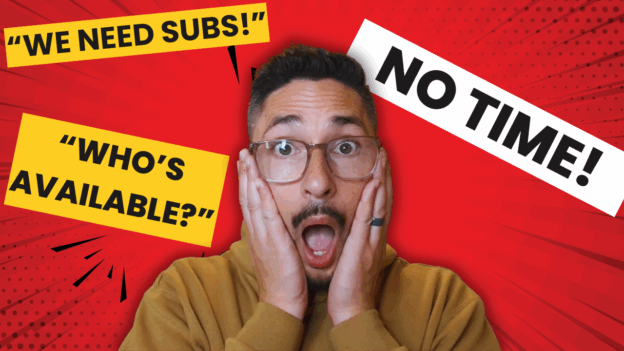
Vibe Coding Solutions
As my first blog post on K12Leaders, I’m excited to start with such an interesting topic. The ability to create whole websites and applications without writing a single line of code will dramatically change how we find solutions to problems. Let’s quickly define what vibe coding is:
“Vibe coding is a fresh take in coding where users express their intention using plain speech and the AI transforms that thinking into executable code.” (IBM.com)
For years, I’ve noticed (and experienced) the struggle that school staff have had with creating a substitute teacher schedule for absent teachers due to professional development events, etc. It was very common to spend an egregious amount of time determining how many full-time subs we’d need, the number of potential roving subs, and/or the number of in-house subs we’d need to ensure every teacher was covered. Recently, I used Google AI Studio (with Google’s Gemini 2.5 Preview) to help me build a workable solution from scratch to address this issue.
Side note: approximately a month ago, I began my exploration of Google Gemini Advanced and Google AI Studio. It wasn’t long before I discovered that it did a decent job of helping me write code and create websites based on prompts and descriptions that I gave it. To be perfectly transparent, I hold an authorization in Computer Concepts and Applications (I was originally a Computer Science major in college before switching to Communications). While anyone with little knowledge of computer science or coding will be able to create something useful for themselves and/or others, those with a strong foundation in computer science and coding will increase their productivity exponentially with AI.
I used Google AI Studio to vibe code a website that I’m calling ClassCovered to help address the issue of efficiently creating a “sub coverage schedule”. The user simply creates a CSV file of their master schedule with the following columns:
Teacher Name, Department, Period 1, Period 2, Period 3, etc.
Once the user uploads their CSV file, they are guided by the website to identify which teachers will be absent and for which periods, they will select any full-day and/or roving subs, and any in-house subs. Once everything is selected, the user can print their new master schedule with all teachers and substitutes identified as well as a coverage summary. The full demonstration can be found in my YouTube video below.
My other projects can also be found on my website: www.dietrichucation.com
If you have any feedback, please let me know: dietrichucation@gmail.com
-
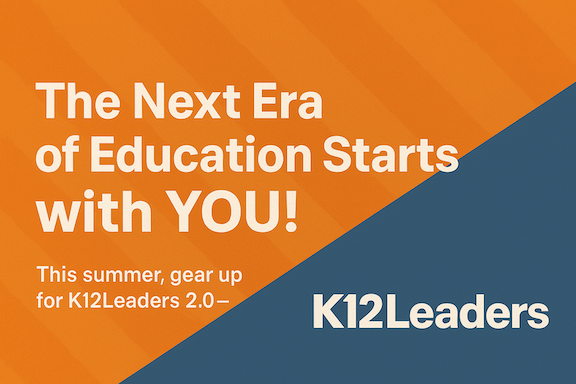
The Next Era of Education Starts with YOU!
Education is entering a new era—one driven by innovation, authenticity, and human connection. And at the center of it is K12Leaders 2.0 , a vibrant professional space where educators can grow, collaborate, and lead without the digital distractions that weigh down traditional platforms.
Built with educators, for educators, this platform doesn’t just meet the moment. It redefines what’s possible.
Empowering Individuals. Elevating Teams.
K12Leaders 2.0 is more than just a network—it’s a district-wide growth engine . From new hire onboarding to real-time coaching and collaborative content creation, it brings together the tools your faculty and staff need to thrive.
For educators , it means:
- Curated content that’s actually relevant
- Spaces for real collaboration—not just performance
- PD and mentorship that respect their time and expertise
For districts , it means:
- Streamlined, scalable professional learning
- Powerful onboarding and retention tools
- A unified space that aligns culture, goals, and voice
No Ads. No Noise. All Growth.
Let’s face it: most professional platforms weren’t built for education. K12Leaders 2.0 clears the clutter with ad-free, algorithm-free experiences that keep your team focused on growth, not distractions.
Need a hub for peer mentorship? Want staff to track PD with ease? Looking to share initiatives, celebrate wins, or gather feedback fast? It’s all here—intuitive, educator-powered, and ready to scale across your district.
This Summer, Set the Stage
Whether you’re a forward-thinking teacher, an instructional coach, or a district leader mapping out fall goals—now is the moment to find your place inside a platform built for the future of connected learning.
K12Leaders 2.0 is launching soon—and the next chapter of education begins with bold communities like yours. Let’s create something extraordinary. Together.
-
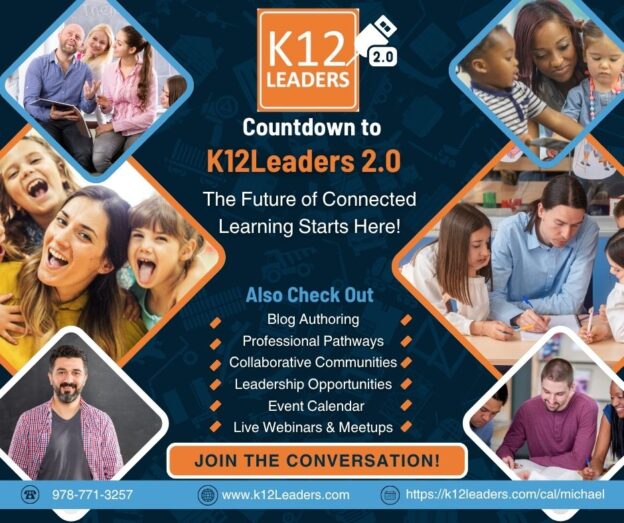
K12Leaders 2.0: The Future of Connected Learning
The future of education isn’t just happening in classrooms—it’s unfolding in real-time conversations, peer collaborations, and brave idea-sharing that transcends walls and zip codes. And leading that evolution is K12Leaders 2.0 —a platform purpose-built to redefine what it means to learn, grow, and lead together.
From Isolation to Collaboration
Educators have always been innovators. But too often, their ingenuity is siloed—trapped within buildings, limited to district boundaries, or buried under competing priorities. K12Leaders 2.0 changes that by erasing those boundaries . It brings together educators at every level—teachers, administrators, counselors, specialists—to connect over common challenges and bold solutions.
With tools like Ask & Answer , Mentor Match , and Live Learning Central , the platform transforms professional development from a passive checklist into a living, breathing community of practice .
Learning That Flows With You, Not Against You
Traditional PD often feels like something that happens to educators, rather than with them. But connected learning thrives when it’s relevant, timely, and driven by those in the trenches.
K12Leaders 2.0 puts the steering wheel back in educators’ hands. Want to attend a live session during your planning block? Done. Need quick feedback on a new resource? Ask and get insight from people who’ve been there . This is PD that moves at the speed of curiosity.
A Platform That Reflects the Profession
This isn’t just a tool—it’s a community designed with the unique rhythms of K–12 in mind. No ads. No gimmicks. Just meaningful content, thoughtful collaboration, and the freedom to build professional learning networks that reflect who you are and who you’re becoming.
Whether you’re launching an initiative, mentoring a colleague, or finding your next big idea, K12Leaders 2.0 is where connected learning becomes transformational learning .
The future of connected learning is here—and it’s powered by educators.
Welcome to K12Leaders 2.0. Let’s build something extraordinary, together.
-
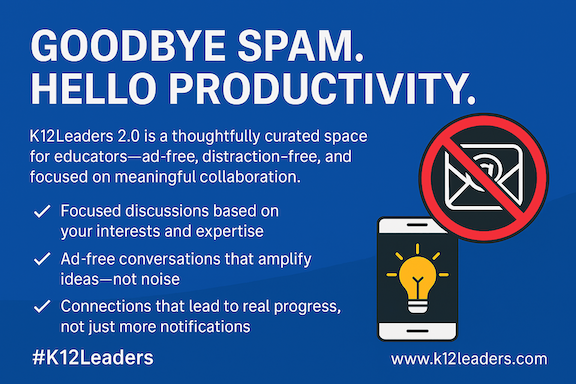
Goodbye Spam. Hello Productivity: Why K12Leaders 2.0 Is the Educator Space You’ve Been Waiting For
In today’s digital world, most professional networks are designed for maximum reach , not maximum relevance . As educators, we log in seeking meaningful conversations and useful resources—only to be met with autoplay ads, automated DMs, and endless notifications that cloud our focus. These platforms weren’t built for our workflow, our priorities, or the way we collaborate.
K12Leaders 2.0 is flipping that narrative.
This isn’t just a new feature set—it’s a reimagined experience grounded in the belief that when noise disappears, brilliance thrives. With no ad clutter, no unsolicited pitches, and no endless scroll of self-promotion , this is a space where conversations are purposeful and tools are actually helpful. You won’t waste time dodging spam to get to what matters—because what matters is all you’ll find here .
Inside the platform, you’ll discover focused, interest-driven groups where educators brainstorm strategies, co-create resources, and celebrate small wins that lead to big change. You’ll get updates that are actually relevant—timely notifications, streamlined access to events and tools, and a community that values thoughtful interaction over empty engagement.
The result? Less noise. More progress.
K12Leaders 2.0 isn’t just a place to connect—it’s a place to build , with fellow educators who are in the work, asking the same questions, and striving toward the same goals. Whether you’re leading PD, mentoring new teachers, rethinking curriculum, or just looking to be inspired—this is the digital staff room where real ideas take root.
So go ahead. Say goodbye to spam. Say hello to productivity, purpose, and a community that gets it.
Because when educators are given the right space, what we create is extraordinary .
-

Breaking Down Barriers: Why AAC Access is Critical for Educational Equity
Communication is more than just words—it’s the foundation of human connection, learning, and self-expression. For many K-12 students with communication disabilities, Augmentative and Alternative Communication (AAC) devices and software represent the difference between silence and having a voice, between isolation and inclusion, between academic struggle and success.
Yet across our educational system, a troubling disparity exists. While some students have access to the AAC tools they need to thrive, countless others remain voiceless in their classrooms, unable to fully participate in the learning experiences that are their fundamental right.
The Academic Impact: More Than Just Grades
When students lack access to appropriate AAC devices and software, the consequences extend far beyond test scores. These essential tools serve as gateways to classroom participation, allowing students to engage with educational content, express their understanding, and demonstrate their literacy skills. Without them, students face barriers that can seem insurmountable.
The ripple effects are profound. Students who cannot communicate effectively in academic settings often experience long-term underachievement, not because they lack ability or potential, but because they lack the tools to express what they know. This educational disadvantage follows them throughout their academic journey, limiting future opportunities and closing doors that should remain open.
The Human Cost: Social and Emotional Well-being
Beyond academics lies an even more concerning impact on social and emotional development. Students denied effective communication tools frequently experience social isolation, mounting frustration, and diminished self-esteem. These challenges create a devastating cycle where disengagement from school compounds academic difficulties, leading to further isolation and diminished confidence.
When we fail to provide AAC access, we’re not just limiting academic potential—we’re affecting the fundamental human need for connection and self-expression that shapes a young person’s entire sense of self and place in the world.
The time for action is now. Every day that passes without addressing AAC access disparities represents lost opportunities for students who simply need the right tools to unlock their potential.A Foundation Built on Core Values
Addressing this disparity isn’t just an educational imperative—it’s a reflection of our deepest values as educators and community members:
Respect means creating learning environments where every student’s communication needs are acknowledged and supported, fostering appreciation for the diverse ways people express themselves.
Collaboration requires building partnerships between educators, families, speech-language pathologists, and technology specialists to ensure comprehensive AAC support.
High Expectations means refusing to lower our academic standards for students with communication disabilities, instead providing them with the tools they need to meet rigorous benchmarks.
Responsibility involves empowering students to become independent communicators and learners, taking ownership of their educational journey.
Equity demands that we provide all students with access to curriculum through quality instruction and appropriate communication tools.
Empowerment means building communities where every student can contribute their unique voice and perspective.
Transforming Education Through Inclusive Design
Investing in AAC accessibility creates a transformative ripple effect throughout our educational system. When we ensure that all students can communicate effectively, we enhance curriculum accessibility for everyone. Universal design principles benefit not just students with disabilities, but create more engaging and inclusive learning experiences for all learners.
This investment also supports teachers in developing new instructional design practices, building their capacity to create truly inclusive classrooms where every student can participate fully. The professional growth and collaboration that emerge from this work strengthens our entire educational community.
Economic and Social Returns on Investment
This isn’t just about meeting immediate educational needs—it’s about investing in our community’s future. Students who can communicate effectively are more likely to graduate, pursue higher education, and contribute meaningfully to our workforce and economy. The long-term economic benefits of ensuring AAC access far exceed the initial investment costs.
Moreover, this is fundamentally an issue of social equity and justice. When we provide all students with the communication tools they need, we take a crucial step toward creating a more inclusive society where everyone can participate fully in community life.
The Path Forward
The time for action is now. Every day that passes without addressing AAC access disparities represents lost opportunities for students who simply need the right tools to unlock their potential. These students have voices waiting to be heard, ideas ready to be shared, and contributions that can enrich our entire educational community.
Creating equitable access to AAC devices and software isn’t just the right thing to do—it’s an investment in a future where communication barriers no longer determine educational outcomes, where every student has the opportunity to learn, grow, and thrive.
The question isn’t whether we can afford to make this investment. The question is whether we can afford not to. Our students—and our future—depend on the answer.
Kim Zajac, is a certified SLP and Audiologist in Massachusetts. She is an ASCD/ISTE Community Leader, Educator Mentor for the Vital Prize Challenge, an Adobe Creative Educator Leader and Magic School Ambassador. Kim has served as a virtual practicum instructor at Speech@Emerson and is Co-Founder of EdCampSoutheasternMA. She is an FETC Featured Speaker and has presented at ASU GSV AIRShow, SXSWEDU, ISTE, MassCUE, & NYC Schools Tech Summit. Kim specializes in creating programs and sharing learning strategies to support students with diverse learning needs. She is passionate about establishing equitable access and inclusion for ALL students. You can connect with Kim at KimZajac.com
-
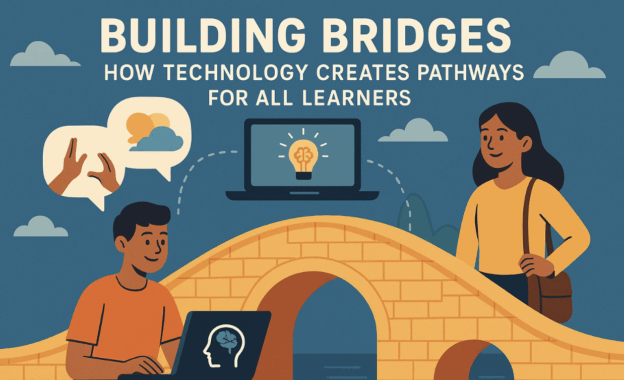
Tech’ing it One Step at a Time: Reflections on supporting diverse learners to thrive in a digital world
As someone who transitioned from a career in medical speech language pathology to K-12 education, I’ve witnessed firsthand the disconnect between students’ brilliant ideas and their ability to express them through traditional means. This gap is particularly evident for students with language disabilities and learning differences who have so much to contribute but lack the tools to bridge that gap.
Finding Pathways Through Technology
My journey began with noticing the specific barriers students face. For middle school students with language learning disabilities, figurative language—idioms, multiple-meaning words, and metaphors—created significant obstacles both academically and socially.
The breakthrough came through what I call “visual language bridges”—using AI-enabled tools to generate visual interpretations of both literal and figurative meanings of language. Students who previously shut down during these lessons suddenly became active participants, moving from feeling excluded to confidently understanding metaphors and even creating their own.
This transformation wasn’t just about academic achievement—it was about enabling full participation in both classroom discussions and social interactions. When technology removes barriers rather than creating new ones, it becomes a bridge to understanding and expression.
The Gaps in EdTech
Despite our progress, significant gaps remain in educational technology. Perhaps most glaring is that most EdTech is designed for an “average” student who doesn’t actually exist. We’re still missing robust, accessible design principles that center students with disabilities from the beginning—not as an afterthought.
To address this challenge, I’ve been seeking partnerships with industry to ensure diverse perspectives are included in the design process itself. Another critical gap lies in professional learning. We can have the most innovative tools, but if educators don’t understand how to implement them effectively with an equity lens, we’re missing the opportunity.
The promise of educational technology has never been about the newest features—it’s about creating pathways for every learner to express their unique brilliance and participate fully in both education and community.AI: Bridge or Barrier?
AI has real potential as an equalizer in education, but like any tool, it’s all in how we implement it. For students with language learning disabilities, AI tools have created bridges to understanding complex language conventions that previously seemed completely inaccessible.
However, AI isn’t inherently equitable—it reflects both the data it’s trained on and the intentions of its designers. The true equalizing potential emerges when AI handles the mechanical barriers that have traditionally excluded certain students, freeing them to focus on higher-order thinking, creativity, and authentic expression.
Beyond Device Bans
The conversation around student wellbeing often leads to discussions about technology restrictions in schools. Yet these blanket approaches miss important nuances, particularly for students who rely on technology for access. For some of my students, supportive technology is absolutely essential for their academic success and emotional wellbeing.
A key distinction worth making is between consumption and creation. When students primarily consume content through devices, negative impacts are more common. But when they create, connect, and actively engage—technology becomes empowering.
Rather than focusing solely on restrictions, we need to equip students with skills for intentional and ethical technology use. The most successful approaches maintain clear frameworks for when and how technologies are used, while preserving flexibility for students who need these tools as accessibility supports.
Technology isn’t just about completing assignments—it’s about unlocking new ways of thinking, creating, and connecting.Extending Impact Beyond Classrooms
Technology shouldn’t just be an in-school tool—it needs to bridge between school, home, and the broader world students will navigate. What I’ve found most impactful is teaching students to be their own advocates. When students discover tools that help them decode figurative language in social interactions, the impact extends far beyond any classroom assignment.
Schools must also better include families in understanding these tools and more explicitly connect technology skills to future opportunities. Technology isn’t just about completing assignments—it’s about unlocking new ways of thinking, creating, and connecting.
A Vision of Democratized Access
What began as a journey to seek solutions for students with language learning disabilities has evolved into a deeper understanding of how technology can democratize access for all learners.
When implemented thoughtfully, with intentional focus on removing barriers, technology becomes more than just a tool—it becomes a bridge to full participation in learning and life. This approach requires centering diverse learners in the design process, providing robust professional learning for educators, and embracing technology as a means to both academic and social inclusion.
The promise of educational technology has never been about the newest features—it’s about creating pathways for every learner to express their unique brilliance and participate fully in both education and community. When we keep this vision at the center of our work, technology truly becomes transformational.
Kim Zajac, is a certified SLP and Audiologist in Massachusetts. She is an ASCD/ISTE Community Leader, Educator Mentor for the Vital Prize Challenge, an Adobe Creative Educator Leader and Magic School Ambassador. Kim is a virtual practicum instructor at Speech@Emerson and is Co-Founder of EdCampSoutheasternMA. She is an FETC Featured Speaker and has presented at ASU GSV AIRShow, SXSWEDU, ISTE, MassCUE, & NYC Schools Tech Summit. Kim specializes in creating programs and sharing learning strategies to support students with diverse learning needs. She is passionate about establishing equitable access and inclusion for ALL students. You can connect with Kim here on K12 Leaders, LinkTree, LinkedIn or at Kimzajac1@gmail.com
